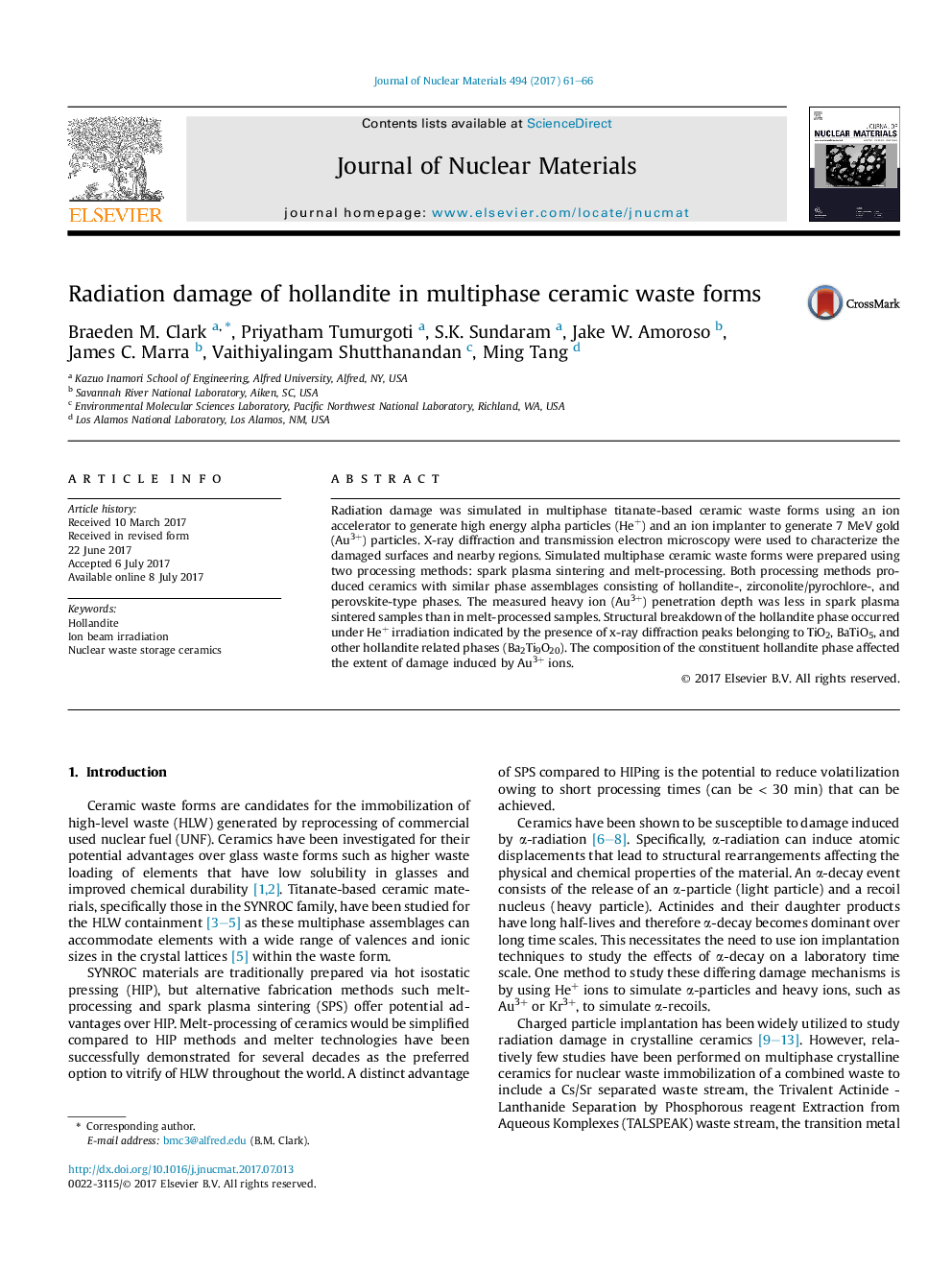| Article ID | Journal | Published Year | Pages | File Type |
|---|---|---|---|---|
| 5454076 | Journal of Nuclear Materials | 2017 | 6 Pages |
Abstract
Radiation damage was simulated in multiphase titanate-based ceramic waste forms using an ion accelerator to generate high energy alpha particles (He+) and an ion implanter to generate 7Â MeV gold (Au3+) particles. X-ray diffraction and transmission electron microscopy were used to characterize the damaged surfaces and nearby regions. Simulated multiphase ceramic waste forms were prepared using two processing methods: spark plasma sintering and melt-processing. Both processing methods produced ceramics with similar phase assemblages consisting of hollandite-, zirconolite/pyrochlore-, and perovskite-type phases. The measured heavy ion (Au3+) penetration depth was less in spark plasma sintered samples than in melt-processed samples. Structural breakdown of the hollandite phase occurred under He+ irradiation indicated by the presence of x-ray diffraction peaks belonging to TiO2, BaTiO5, and other hollandite related phases (Ba2Ti9O20). The composition of the constituent hollandite phase affected the extent of damage induced by Au3+ ions.
Keywords
Related Topics
Physical Sciences and Engineering
Energy
Nuclear Energy and Engineering
Authors
Braeden M. Clark, Priyatham Tumurgoti, S.K. Sundaram, Jake W. Amoroso, James C. Marra, Vaithiyalingam Shutthanandan, Ming Tang,
